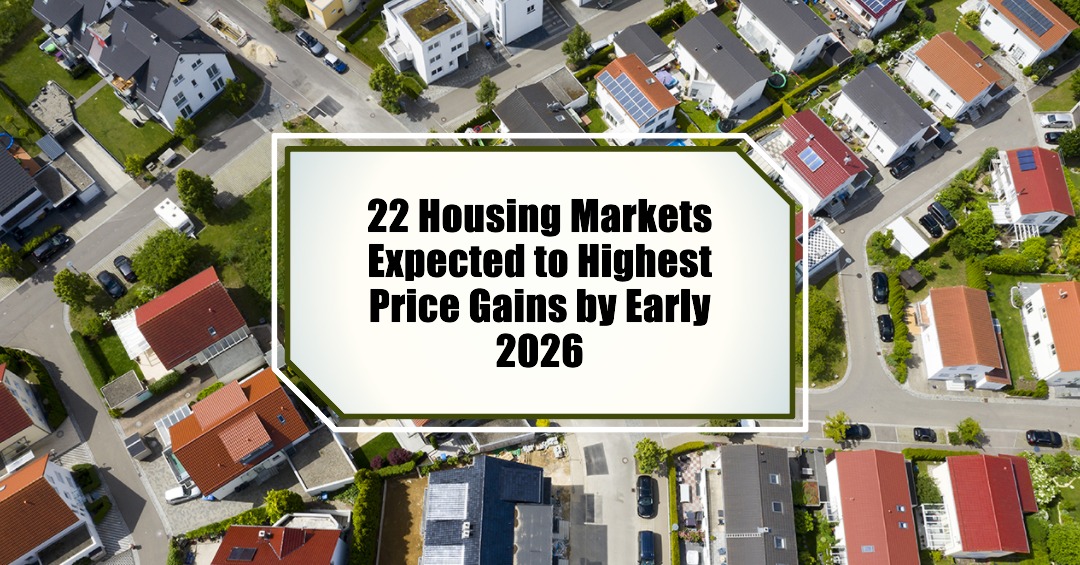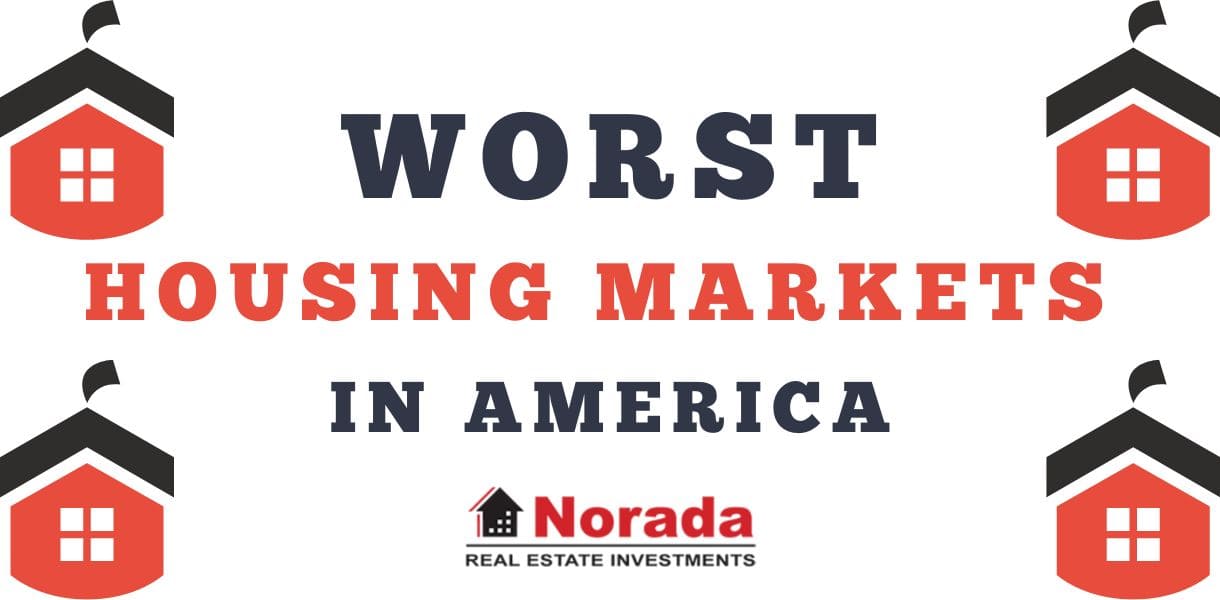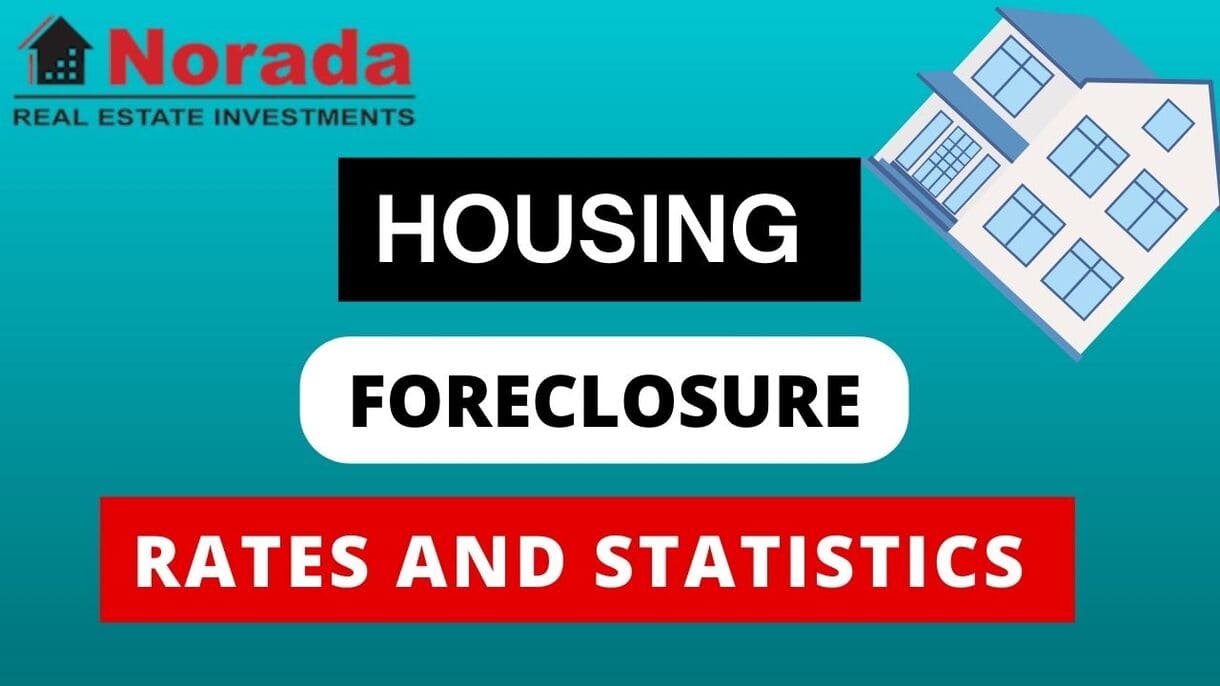The housing market rollercoaster continues, and if you're trying to figure out where things are headed, you're not alone. It feels like just yesterday everyone was talking about prices skyrocketing everywhere, and now? Not so much, at least on a national level.
But here's the thing: real estate is local. Always has been, always will be. While the big picture forecast might show a dip, some specific spots are expected to keep climbing. According to the latest analysis from Zillow Research, released in April 2025, there are indeed 22 housing markets where home prices will rise the most over the next 12 months, defying the broader trend they predict for the rest of the country.
So, what's the big picture, according to Zillow? Their updated forecast is predicting a national drop in home values of 1.9% through 2025. That's a pretty significant shift from their earlier expectation of a small increase. They point to more homes hitting the market and mortgage rates staying elevated as the main reasons sellers are having to cut prices to attract buyers.
On the flip side, they do expect existing home sales to tick up slightly, forecasting about 4.2 million sales in 2025, a modest 3.3% bump from the year before. Essentially, they see buyers getting a bit more power and time to shop around, while sellers are adjusting expectations. Rental markets?
They see rents still rising, but at a slower pace, especially for apartments, with demand for single-family rentals holding steady as some folks wait on the sidelines for the buying market to cool off or rates to drop.
But let's get back to those specific places expected to see prices go up. This is where it gets interesting because it highlights the power of local market dynamics even when national headwinds are blowing. As someone who's spent years watching real estate trends, I know that national averages can sometimes hide fascinating stories happening in individual towns and cities.
Understanding the Forecast in Context
Before we dive into the list, let's be super clear: these are forecasts. They're based on complex models that take into account a ton of data – things like current prices, sales trends, inventory levels, rental data, economic indicators, and even search activity on Zillow's own platform. Zillow themselves mention that mortgage rates are in an “especially unpredictable period,” and unforeseen events could always change things. So, treat this list not as a crystal ball, but as a snapshot of where Zillow's models predict the strongest price growth based on the data available in April 2025.
What makes a market potentially buck the national trend of price depreciation? Based on my experience, it often comes down to a few key factors:
- Relative Affordability: Even if national prices are high, some smaller or less-discovered markets might still offer value, attracting buyers looking for more bang for their buck.
- Limited Supply: If a market simply isn't building many new homes, or has geographical constraints (like being surrounded by mountains or water), limited inventory can keep upward pressure on prices even if demand cools slightly.
- Specific Demand Drivers: Is there a major employer expanding? A new amenity like a park or transportation hub? Is it a desirable retirement spot, a recreational haven, or an area seeing an influx of remote workers? Local job growth and population shifts are huge drivers.
- Unique Market Characteristics: Some markets just have their own rhythm. Maybe it's a popular vacation spot, a college town with stable demand, or an area benefiting from specific state-level initiatives.
Looking at Zillow's national forecast of a price drop, finding markets predicted to gain value is like finding little islands of appreciation in a sea of slight decline. It tells me these specific areas likely have some combination of the factors above working strongly in their favor, strong enough to counteract the pressure from higher rates and increased national inventory levels.
22 Housing Markets Where Prices Are Predicted to Rise the Most by 2026
Now, let's get to the list everyone wants to see. The data provided ranks markets by their projected price change from March 31, 2025, to March 31, 2026. As requested, I'm grouping markets that have the same forecast percentage and including all markets from Steamboat Springs, CO down to Price, UT in the provided data. This gives us the top ranks, which includes 22 specific markets in total.
Here's the breakdown based on Zillow's April 2025 forecast:
Rank 1
- Projected Price Increase (March 2025 – March 2026): 3.8%
- Market: Steamboat Springs, CO
My take: No huge surprise to see a high-end recreational market like Steamboat Springs at the top. Places like this often have limited supply due to geography and strong demand from both second-home buyers and those able to work remotely. Even if the broader market softens, desirability for unique lifestyle locations remains high for a segment of the population.
Rank 2
- Projected Price Increase (March 2025 – March 2026): 3.0%
- Market: Maysville, KY
My take: Maysville is an interesting contrast to Steamboat Springs. Often, we see more affordable or smaller regional centers show up on lists like this when larger, more expensive markets cool off. Could this be related to value relative to nearby larger metros, or perhaps specific local economic factors? It highlights that appreciation isn't just confined to famous hotspots.
Rank 3
- Projected Price Increase (March 2025 – March 2026): 2.7%
- Market: Edwards, CO
My take: Another Colorado mountain town ranking high. Edwards is near Vail and Beaver Creek. This reinforces the idea that desirable recreational areas with limited buildable land can often maintain or increase value even in tougher markets, driven by affluent buyers or those prioritizing lifestyle.
Rank 4
- Projected Price Increase (March 2025 – March 2026): 2.5%
- Market: Augusta, ME
My take: As the capital of Maine, Augusta has a stable base of government employment. Maine's popularity as a destination, both for tourists and those seeking a different pace of life (especially after the remote work shift), might be playing a role here. It's another example of a smaller regional center showing predicted resilience.
Rank 5
- Projected Price Increase (March 2025 – March 2026): 2.4%
- Markets:
- Atlantic City, NJ
- Alamogordo, NM
- Berlin, NH
My take: This group is fascinating because they are so different. Atlantic City has the draw of gambling and the shore, but has faced economic challenges. Alamogordo has a military base nearby (Holloman Air Force Base), which provides economic stability. Berlin, NH is a smaller town in northern New Hampshire, an area known for its natural beauty and outdoor recreation. This diversity at the same predicted growth rate tells me different factors are likely driving the forecasts in each location – tourism/recreation in AC and Berlin, and stable employment in Alamogordo.
Rank 6
- Projected Price Increase (March 2025 – March 2026): 2.3%
- Markets:
- West Plains, MO
- Jackson, WY
My take: Another pairing of very different markets. Jackson, WY is a world-famous high-end destination similar to Steamboat Springs and Edwards, driven by its proximity to Grand Teton and Yellowstone National Parks and its status as a playground for the wealthy. West Plains, MO, on the other hand, is a regional hub in the Ozarks, likely appealing due to affordability and a slower pace of life. This stark contrast highlights that predicted growth isn't limited to one type of market; it's about specific local supply/demand balances and economic drivers.
Rank 7
- Projected Price Increase (March 2025 – March 2026): 2.2%
- Markets:
- Mayfield, KY
- Thomaston, GA
My take: Two more smaller regional markets. Mayfield was notably impacted by a devastating tornado in late 2021; perhaps this forecast reflects ongoing rebuilding or shifting local dynamics post-disaster. Thomaston is south of the Atlanta metro area, potentially benefiting from folks looking further out for affordability or space, though the forecast shows a slight dip in the immediate few months.
Rank 8
- Projected Price Increase (March 2025 – March 2026): 2.0%
- Market: Dodge City, KS
My take: Famous for its Old West history, Dodge City is a regional center in southwest Kansas. Its economy is tied to agriculture and manufacturing. A forecast of 2.0% appreciation here suggests local economic stability is likely underpinning the housing market's resilience compared to national trends.
Rank 9
- Projected Price Increase (March 2025 – March 2026): 1.9%
- Markets:
- Kingston, NY
- Statesboro, GA
- Keene, NH
- Cedartown, GA
- Clewiston, FL
- Butte, MT
My take: This is the largest group by far, showing a cluster of markets all predicted to see modest appreciation around 1.9%. We see a mix here: Kingston, NY (Hudson Valley, potentially benefiting from proximity to NYC); Statesboro and Cedartown, GA (smaller Georgia cities); Keene, NH (southwest NH); Clewiston, FL (inland Florida, near Lake Okeechobee); and Butte, MT (historic mining town, now a regional center). The common thread here might be relative affordability compared to nearby larger areas or specific local economic anchors keeping demand steady.
Rank 10
- Projected Price Increase (March 2025 – March 2026): 1.8%
- Markets:
- Rochester, NY
- Laconia, NH
- Brevard, NC
- Price, UT
My take: This final group also shows diversity. Rochester, NY is a larger metro area than most on this list. Laconia, NH is in the Lakes Region. Brevard, NC is in the mountains near Asheville, another area popular for recreation and lifestyle. Price, UT is in a more rural part of central Utah. The presence of Rochester suggests that even some larger, more established metros might find stability and slight growth, perhaps driven by specific neighborhoods, educational institutions, or industries within the city. The others again lean towards smaller, potentially more affordable, or recreation-adjacent areas.
Here's a table summarizing these markets by their predicted appreciation rate:
| Rank | Predicted Price Increase (Mar 2025 – Mar 2026) | Market(s) |
|---|---|---|
| 1 | 3.8% | Steamboat Springs, CO |
| 2 | 3.0% | Maysville, KY |
| 3 | 2.7% | Edwards, CO |
| 4 | 2.5% | Augusta, ME |
| 5 | 2.4% | Atlantic City, NJ; Alamogordo, NM; Berlin, NH |
| 6 | 2.3% | West Plains, MO; Jackson, WY |
| 7 | 2.2% | Mayfield, KY; Thomaston, GA |
| 8 | 2.0% | Dodge City, KS |
| 9 | 1.9% | Kingston, NY; Statesboro, GA; Keene, NH; Cedartown, GA; Clewiston, FL; Butte, MT |
| 10 | 1.8% | Rochester, NY; Laconia, NH; Brevard, NC; Price, UT |
Data Source: Zillow Home Value and Home Sales Forecast, April 2025
What Can We Learn from This List?
Looking at this list, a few things jump out at me:
- It's Not Just One Type of Market: We see a mix of high-end recreational areas (Steamboat, Edwards, Jackson), smaller regional centers (Maysville, Augusta, West Plains, Dodge City, Statesboro, Cedartown, Keene, Berlin, Butte, Price), and some unique cases like Atlantic City or markets potentially benefiting from spillover affordability (Thomaston, Kingston).
- Affordability Matters: Many of these markets, outside of the high-end Colorado and Wyoming examples, are relatively more affordable than major coastal metros or Sunbelt boomtowns that saw massive price increases earlier in the cycle. Could this predicted growth be a function of delayed affordability corrections or continued demand for value? I think that's definitely a factor.
- Local Anchors are Key: Stable employment sources (military bases, government jobs), recreational appeal, or simply being a necessary regional hub seem to be providing enough underlying demand to support price increases even when national conditions are softer.
- Modest Growth is Still Growth: While 3.8% or even 1.8% might seem small compared to the double-digit appreciation we saw in 2020-2022, in a period where the national forecast is negative, any positive growth is notable. It suggests these markets have strong fundamentals relative to the current economic and interest rate environment.
My Thoughts on Navigating the Market
Based on this data and my understanding of market cycles, here's my perspective:
First, remember that a forecast is just a forecast. It's a model's best guess based on current information. Things can change. Mortgage rates could drop faster (or slower) than expected. The economy could surprise us. Local factors in any of these markets could shift.
Second, if you're looking to buy or invest, particularly in one of these markets, this data is a piece of the puzzle, not the whole picture. You still need to do your homework on the ground. What are inventory levels really like right now in that specific town or neighborhood? What are the local job prospects? What's the condition of the homes? How do the prices compare to historical averages for that specific market, not just the national trend?
Third, this reinforces the power of diversification if you're thinking about real estate investment. While national trends matter, having exposure to different types of markets – some larger, some smaller, some driven by different economic factors – can help buffer against downturns in any single area.
Finally, for most people, buying a home is about more than just appreciation potential. It's about finding a place to live, raise a family, or build a life. While potential price growth is a nice bonus, focusing too much on short-term forecasts (even ones looking out a year like this) might distract from finding the right home for your needs and budget in a community you actually want to live in. The predicted growth rates here, while positive, are relatively modest. This isn't a signal of a new boom, but rather resilience.
In conclusion, while Zillow's April 2025 forecast paints a picture of slight price declines nationally, these 22 markets (grouped into 10 ranks) from Steamboat Springs, CO, down to Price, UT, are predicted by their models to see home prices continue to climb, albeit modestly, by early 2026.
They represent a fascinating mix of recreational hotspots and smaller regional centers, each likely driven by unique local factors strong enough to counteract the national headwinds of higher rates and increased supply. It's a strong reminder that even in a complex and uncertain housing market, opportunities for appreciation exist, but they're highly localized and require careful, specific research.
Invest in the Fastest-Growing Housing Markets
Looking to build long-term wealth? Norada identifies top housing markets with the highest growth potential projected through 2026.
Get access to pre-vetted properties in emerging cities before they become unaffordable hot zones.
HOT NEW LISTINGS JUST ADDED!
Talk to a Norada investment counselor today (No Obligation):
(800) 611-3060
Also Read:
- Housing Market Predictions 2026: Will it Crash or Boom?
- 12 Housing Markets Set for Double-Digit Price Decline by Early 2026
- Housing Prices Are Set to Rise by 4.1% by the End of 2025
- Housing Market Predictions for the Next 4 Years: 2025 to 2029
- Real Estate Forecast: Will Home Prices Bottom Out in 2025?
- Housing Markets With the Biggest Decline in Home Prices Since 2024
- Why Real Estate Can Thrive During Tariffs Led Economic Uncertainty
- 5 Hottest Real Estate Markets for Buyers & Investors in 2025
- Will Real Estate Rebound in 2025: Top Predictions by Experts
- Will the Housing Market Crash Due to Looming Recession in 2025?
- 4 States Facing the Major Housing Market Crash or Correction





